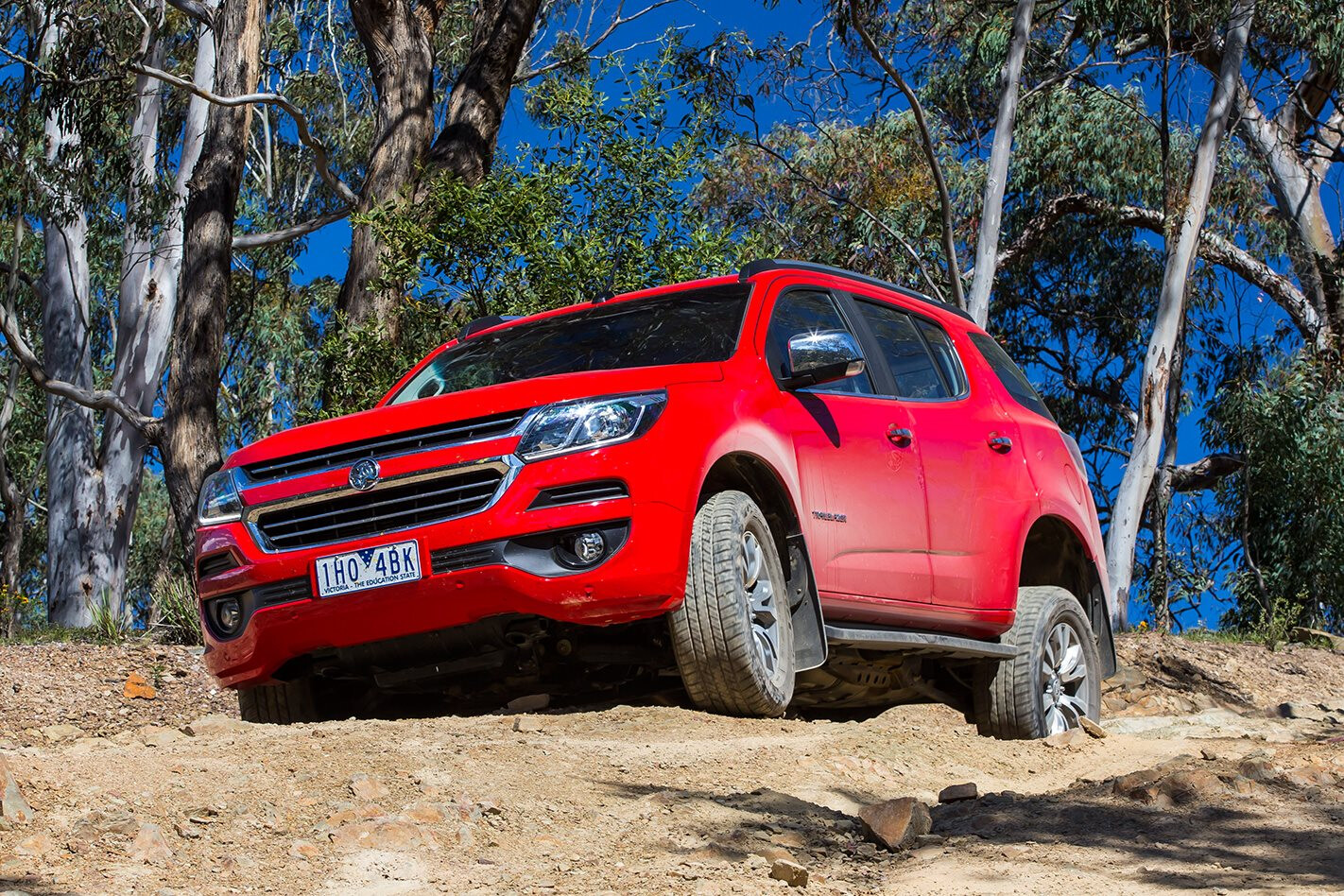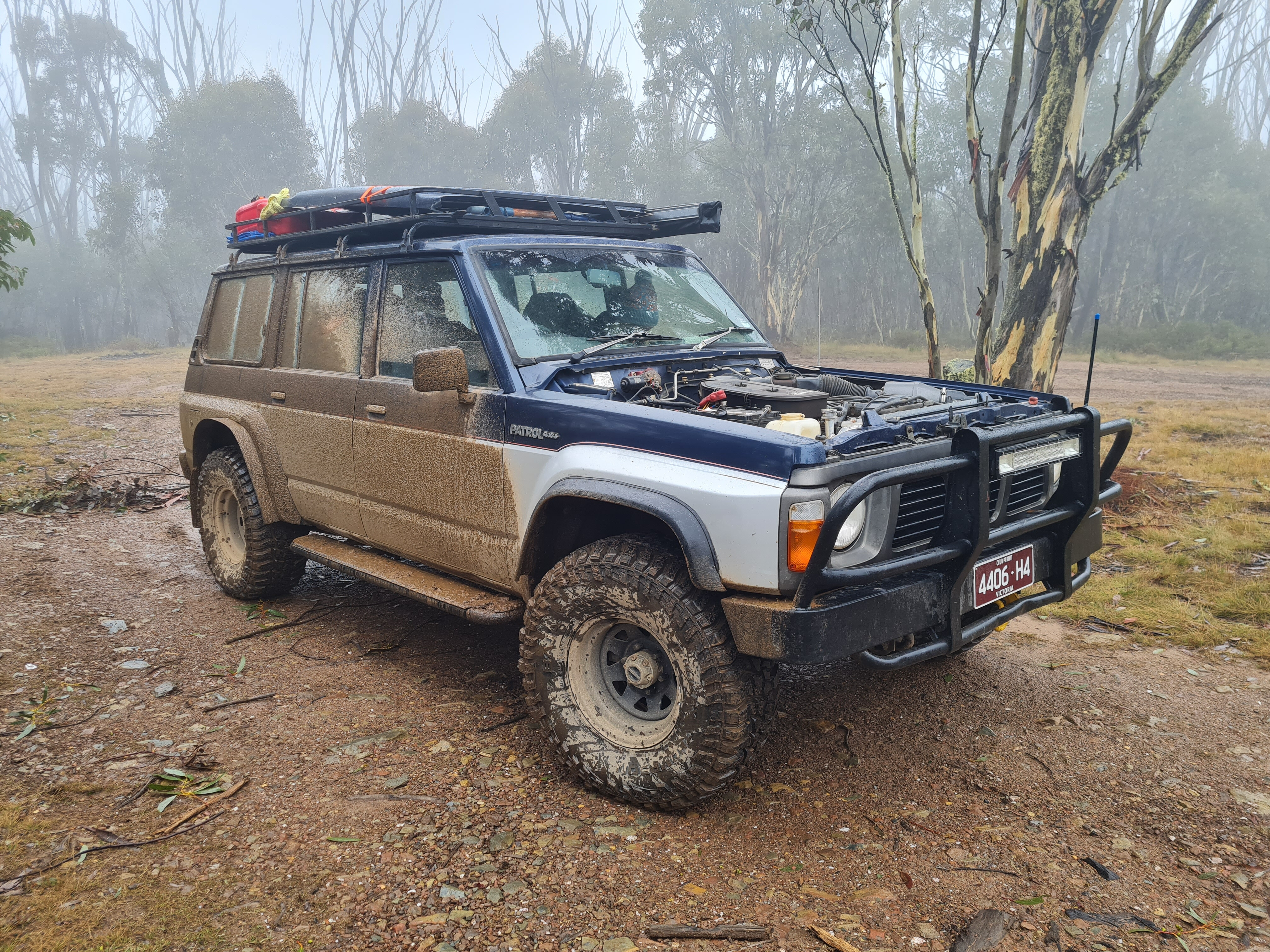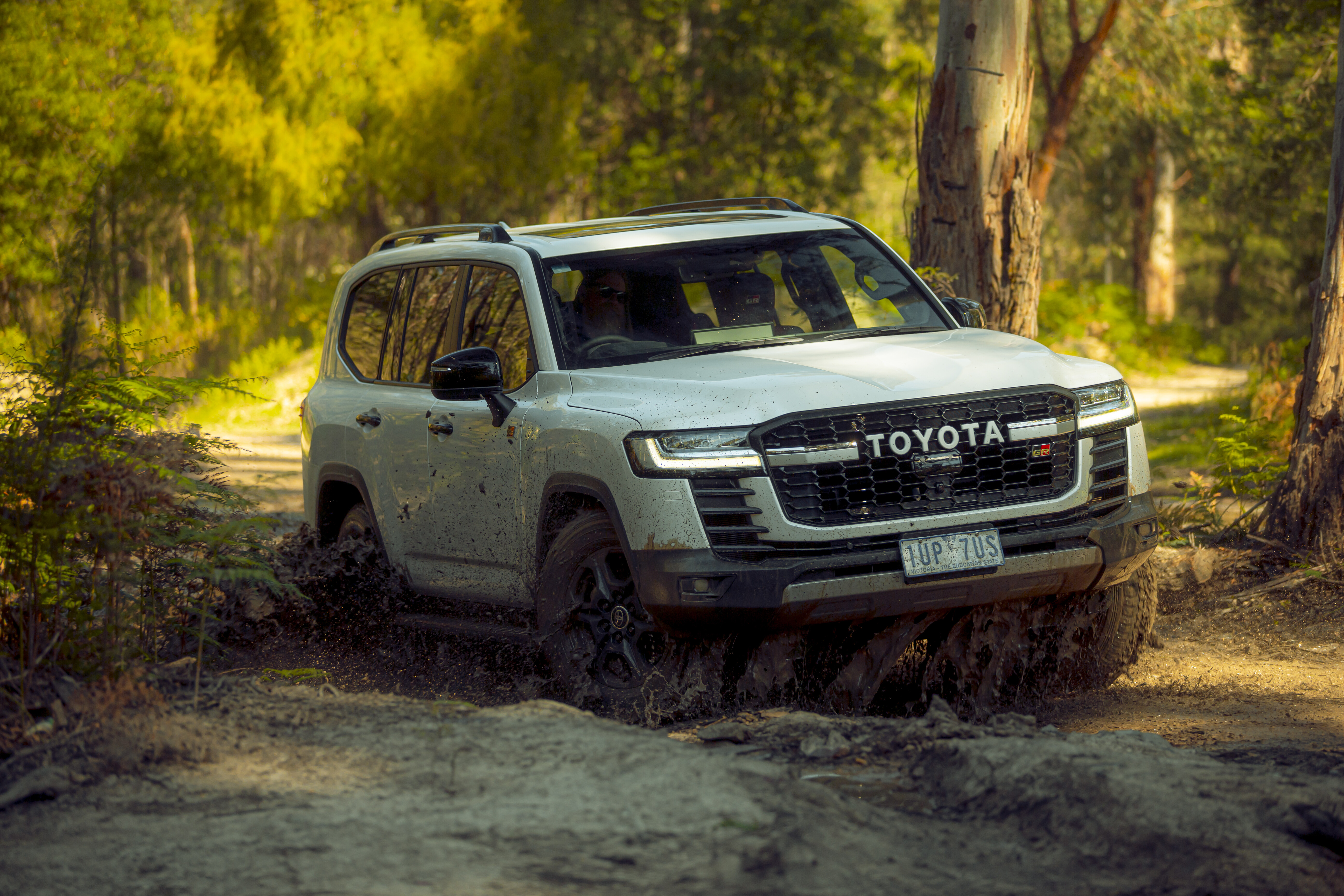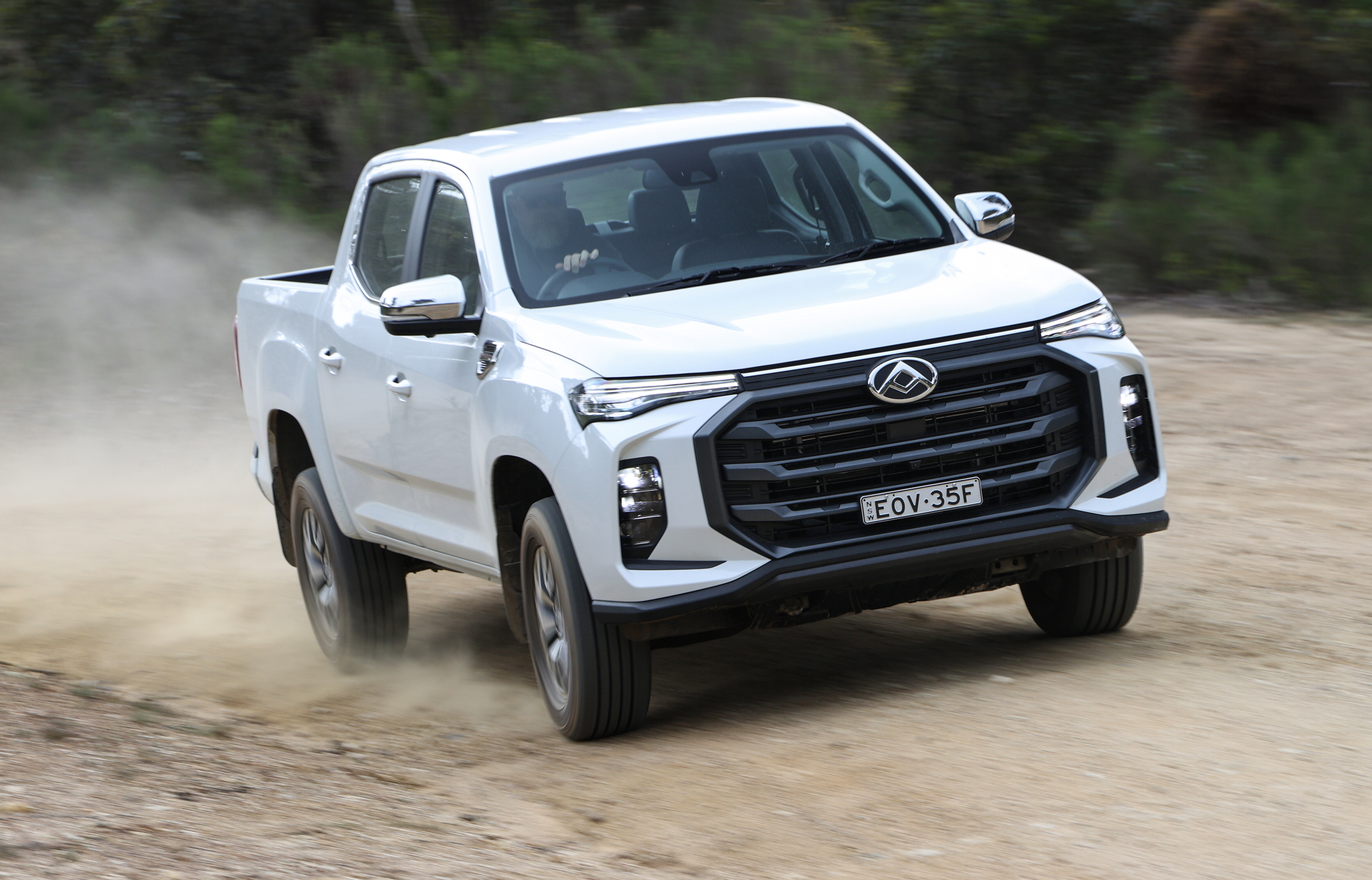HOLDEN’S new Trailblazer was co-developed alongside the significantly updated 2017 Colorado ute, and it shares much of the extensive list of new hardware involved in the ute’s down-to the-last-nut-and-bolt rebirth.
The Holden Trailblazer is effectively a wagon version of the Colorado ute, made possible by little more than swapping the body – separate-chassis construction and changing the rear suspension and brakes.
Like the Colorado 7 it replaces, the Trailblazer is only offered as a seven-seat with automatic transmission (in two spec levels) and competes in a now-well-populated class of ute-based wagons that includes the Ford Everest, Toyota Fortuner, Isuzu MU-X and Mitsubishi Pajero Sport.
POWERTRAIN AND PERFORMANCE DESPITE all the changes the Trailblazer’s 2.8-litre diesel from Italian diesel specialist VM Motori claims no more power and torque than before, but at 147kW and 500Nm it was class-leading anyway, and pedal-to-the-metal delivers on that promise.
What these unchanged figures don’t show is how much smoother and quieter this engine is than before. Thanks to deep-seated changes the previously harsh, noisy and generally unpleasant engine has been changed to a smooth, sweet and relatively quiet ride.
The 2.8 still needs more revs than some competitor engines to give its best, but it does this without fuss and with plenty of reward. At the same time the off-idle and low-rpm driveability has also been improved thanks to revised fuel mapping and other revisions of the fuel-delivery system.
Changes to the GM-sourced six-speed automatic are also most welcome. This gearbox was never bad, but it’s now arguably the best in this wagon-made-from-ute class with smooth, pro-active shifts and nicely tuned shift protocols (where the ’box isn’t always looking to shift up into the tallest gear possible, as so many do – annoyingly – presumably for fuel economy).
One performance figure that has changed in this remake is the official ADR combined-cycle fuel figure, which has dropped from 9.2 to 8.2L/100km. Aside from the new fuel mapping and changes to the automatic transmission, the adoption of electric power steering is also behind this improvement.
On the road these savings play out with a relatively thrifty test average of 9.9L/100km. Anything below 11.0L/100km is good with this class of vehicle.
WHAT’S NEW THE Trailblazer is effectively a Colorado 7 stripped down and put back together again with a large number of new and revised parts.
The key changes include repositioned engine balance shafts; revised fuel injection with additional injector sound proofing; a new torque convertor and other changes for the six-speed automatic; new engine and transmission mounts; new body mounts; new suspension dampers; and electric power steering. Body changes run to new roof mouldings, exterior mirror mounts, door seals, sliding glass channels, B-pillar inserts and a thicker windscreen.
HANDLING AND RIDE THE adoption of electric power steering in place of hydraulic power steering is also one of two key changes to the chassis. As well as saving on fuel (as there’s no power-robbing hydraulic pump to drive) it allows a much broader tuning of the steering weight and effort.
What you notice first up is how little steering effort is required when manoeuvring the Trailblazer at parking and low speeds, which is welcome given the size and weight. Once underway, the steering weight increases to provide good feel and feedback at open-road speeds.
Unlike the Colorado ute, the Trailblazer doesn’t get new springs and swaybars (the front suspension of the ute is actually now closer to the wagon’s tune) but it does get new ‘digressive’ (falling rate) dampers in place of the previously installed linear-rate dampers.
The end result is a wagon that rides, steers and handles very well on most roads. It still doesn’t like really sharp bumps hit at speed – where the suspension can tend to crash – and the live rear axle can make its presence felt on rough roads at higher speeds.
Still, the Trailblazer feels good even on lumpy and bumpy back roads. It’s also quieter in terms of road noise compared to the Colorado 7, and this brings a new level of running refinement.
OFF-ROAD THE electric power steering also works to the Trailblazer’s advantage off-road, especially in tight situations with a much lighter steering effort than the Colorado 7. There’s slightly less lock-to-lock turns needed as well.
In transition from Colorado 7 to Trailblazer, Holden has also tweaked the electronic traction control, but otherwise it’s very much business as usual off-road. What the Trailblazer does off-road is much like what the Colorado 7 did.
The Trailblazer has the same part-time 4×4 system as the Colorado 7 (and Colorado ute for that matter) and unlike the majority of its competitors there’s no rear locker. Not that a locker is the holy grail in this equation, given the lockers in competitor vehicles – bar the Everest – deactivate the traction control on both axles when engaged, so they don’t necessarily always provide an off-road advantage.
Little has changed in terms of its off-road arsenal, so the Trailblazer is good without being great. It’s more than handy for most recreational 4×4 use, but it’s unable to deliver on that last five or 10 per cent when things get particularly difficult.
It’s certainly no Everest or Fortuner off-road, and it needs more suspension travel to be at the top of the class – or a rear locker that keeps the traction active on the front axle. Notable positives include the gearbox’s intuitive and smooth shift protocols, and features such as the auto throttle ‘blip’ on downshifts to help smooth out the engagement of the lower gear.
CABIN, EQUIPMENT AND SAFETY THE Trailblazer has an airy, spacious and open-feel cabin that qualifies for a five-star ANCAP safety thanks in part to seven airbags – two front, two side and two curtain, as well a driver’s knee airbag that the Trailblazer has gained over the Colorado 7.
Despite only having tilt (and no reach) adjustment for the steering wheel, the Trailblazer still offers a comfortable driving position; although the front seats feel a little flat.
The second-row seat, which is good for two medium-sized adults and one child, has decent headroom, but the legroom isn’t great and the seating position has a ‘legs up’ feel. However, the third row is noticeably roomy and can even accommodate adults; although, when folded away the seats make for a high cargo floor, and when deployed the partition doesn’t leave much of a cargo area. No tie-down hooks on the cargo floor, either.
Both Trailblazer models gain Apple CarPlay and Android Auto over the Colorado 7, displayed via Holden MyLink on an eight-inch touchscreen in the LTZ version (as tested here) and a seven-inch screen in the lower-spec LT. The LTZ comes with leather upholstery, electric adjust for the driver’s seat, heated front seats, climate control, self-levelling projector headlights, DRLs, blind-spot monitoring and rear cross-traffic alert. The LTZ also sports 18-inch alloys rather than the LT’s 17s, while both models benefit from a reversing camera and rear parking sensors.
PRACTICALITIES THE Trailblazer ticks most boxes with regards to being a practical 4×4, thanks largely to being based on a robust ute platform. To start with there’s a practical wheel and tyre spec, and if you don’t like the 18s on the LTZ you can fit the OEM 17s from the LT. There’s also a full-size spare, front and rear recovery points, a handy 3000kg towing rating, and plenty of engine power to tow right up to that max.
Under the bonnet a large air filter breathes through from the inner guard, but there’s not much room for a second battery due in part to the standard large battery. Not so good for touring range is the small 76-litre fuel tank.
SUM UP THERE’S no doubt the Trailblazer is a far better vehicle than the Colorado 7, thanks to what has been a thorough from-the-ground-up revision. Most notably, it’s far more refined than before yet still delivers on performance, both of which combine to produce what is now an engaging on-road drive.
Where the Trailblazer needs to be improved is off-road. It does the job, but it’s no stand-out; although there’s not much that a little aftermarket enhancement wouldn’t fix.
After all that, it’s sharply priced and has more standard equipment than before.
SPECS Engine: DOHC 16-valve 4-cyl turbo-diesel Maximum power: 147kW @ 3600rpm Maximum torque: 500Nm @ 2000rpm Gearbox: six-speed automatic 4×4 system: dual-range part-time Crawl ratio: 36.4:1 Tyre spec: 265/60R18 110T Kerb weight: 2203kg GVM: 2820kg Payload: 617kg Towing capacity: 3000kg Fuel tank capacity: 76.0L Test fuel use: 9.9L/100km Touring range*: 717km Price: $52,490 (plus ORC) *Based on fuel tank capacity, test fuel use and a 50km ‘safety’ margin.





